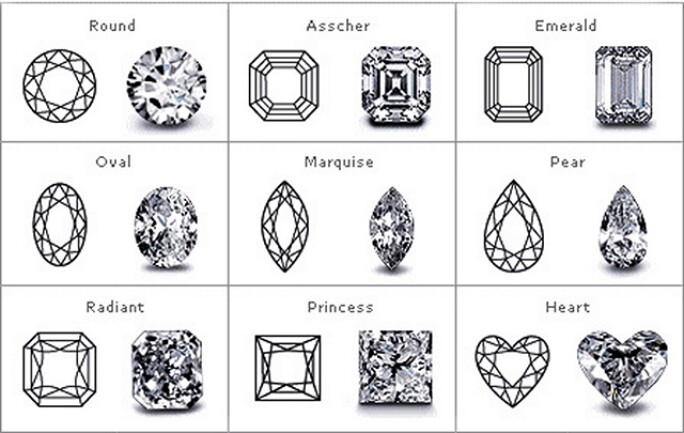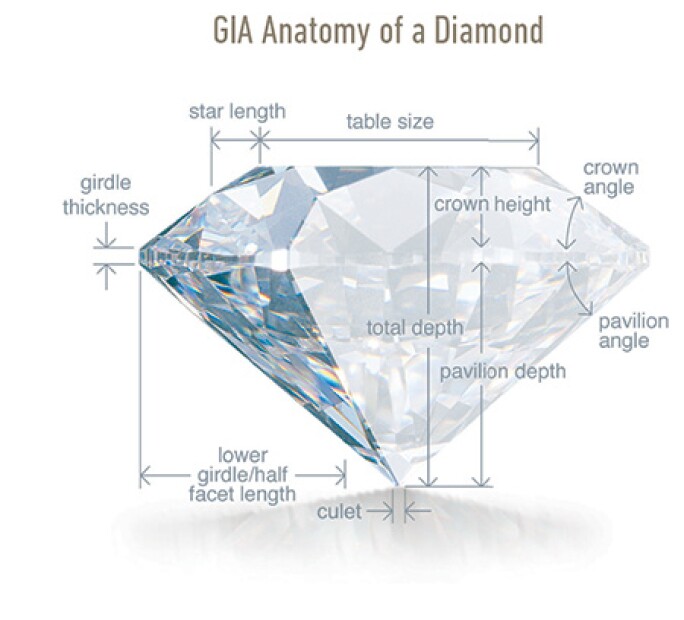F or those who have never ventured into the world of diamonds, the process can feel like navigating an unfamiliar landscape. It's often described as a riddle wrapped in an enigma, and rightly so. While most people are familiar with the term "the 4 Cs," a grading system introduced by the Gemological Institute of America (GIA) that evaluates diamonds based on color, cut, clarity, and carat weight, many wonder if there’s more to consider when buying a diamond. The answer is yes—there’s much more to the diamond-buying experience than just the basics.
Diamonds have been symbols of beauty and rarity for thousands of years. The ancient Greeks believed diamonds were the tears of the Gods, while the Romans thought they were fragments of stars fallen from the sky. The Egyptians even placed diamond rings on the fourth finger, convinced that a "vein of love" ran directly from that finger to the heart. Throughout history, diamonds have been steeped in romance and legend, captivating those who encounter them with their alluring beauty. But it’s not just their history and lore that make diamonds special; it’s their exceptional, otherworldly brilliance.
At the heart of diamond selection lies the notion that "beauty is in the eye of the beholder." Just as with love, there’s something about each diamond that calls to the observer—the way it sparkles, its unique color, or its flawless cut. Before diving into the world of diamonds, it’s helpful to understand the essential criteria that influence a diamond’s value and beauty. To help demystify the process, Sotheby’s specialists share their eight expert tips for buying diamond jewelry like a seasoned pro.
1. What exactly is a carat?
Carat is the universal standard unit used to measure the weight of diamonds. The term "carat" itself originates from the carob tree, native to the Mediterranean, whose seeds were once used as a standard for weighing gemstones. One carat is equivalent to 0.2 grams. Carat weight is one of the four key factors that determine the overall value of a diamond, with larger stones generally commanding higher prices due to their rarity.
2. What is the GIA? What is a GIA certificate?
The Gemological Institute of America (GIA) is an independent, globally recognized laboratory that is highly respected within the diamond industry. A GIA certificate serves as an identity card for each diamond over 1 carat, detailing the stone’s quality and properties, including its rating for the four Cs. This certificate acts as a guarantee of the diamond's authenticity and helps buyers make more informed decisions based on accurate and consistent information.
3. What do the 4 Cs stand for?
The 4 Cs—color, clarity, cut, and carat weight—are the four key factors used to assess a diamond's quality and value. The color scale for diamonds begins at D, representing a colorless diamond, and moves through the alphabet to Z, which represents diamonds with a noticeable yellow or brown tint. Clarity refers to the absence of internal inclusions or external blemishes, with diamonds graded from “Flawless” to “Included 3,” indicating varying levels of visible imperfections.
The cut of a diamond is perhaps the most important factor in its overall brilliance. The GIA assesses the proportions of a diamond’s facets to determine how effectively it interacts with light, creating the desired visual effects. The cut scale ranges from “Excellent” to “Poor,” and a well-cut diamond will shine more brightly than a poorly cut one. Lastly, carat weight measures the size of the diamond, but remember that a larger carat weight doesn’t always equate to better quality if the other three Cs are lacking.
4. Why does the 4 Cs color scale begin with D and not A?
Before the GIA introduced its standardized 4 Cs grading system, diamonds were graded using the A-C scale, with variations such as AA or AAA. However, this system led to confusion, as there was no universal agreement on the exact meaning of each grade. To simplify things and create a consistent system, the GIA chose to begin the color scale with D, making it easier for consumers to compare diamonds and understand their quality.
5. Why does one diamond shine more than another?
A diamond’s brilliance is largely determined by its cut. The quality of the cut influences how light enters the diamond and reflects within, contributing to its sparkle. While round brilliant diamonds tend to offer the most sparkle, other shapes, such as emerald or princess cuts, may offer different qualities of brilliance. An emerald cut diamond, even when perfectly cut, will shine less brightly than a round cut diamond due to its longer, more shallow facets. The closer a diamond’s cut is to perfection, the greater its overall brilliance.
6. Can a diamond break or be damaged?
Diamonds are the hardest naturally occurring substance on Earth, ranking 10 on the Mohs scale of hardness. This exceptional durability makes them resistant to scratching and wear. However, while diamonds are incredibly strong, they can still be damaged if subjected to extreme force or improper care. To ensure its longevity, it’s important to take proper care of your diamond jewelry, storing each piece separately and avoiding contact with other jewelry that could cause scratches.
7. Why isn’t a 0.50 carat diamond half the price of a 1 carat diamond?
While carat weight is a significant factor in a diamond’s price, larger diamonds are not priced in a simple linear manner. The price of a diamond increases exponentially as its carat weight increases. This means that a 1 carat diamond is typically much more expensive than a 0.50 carat diamond of similar quality. Other factors, such as the diamond’s cut, clarity, and color, also contribute to its overall value, meaning that two diamonds of the same carat weight can vary greatly in price depending on these other factors.
8. What is the Kimberly Process?
The Kimberley Process is an international initiative designed to prevent the trade of "conflict diamonds," or diamonds used to fund rebel movements and contribute to violence. It involves a system of certification to ensure that diamonds sold to consumers are sourced ethically and do not fund conflict. The World Diamond Council’s System of Warranties further supports this by requiring diamond suppliers to provide a warranty statement with every transaction, ensuring the legitimacy of the diamond and confirming that it has been sourced in compliance with the Kimberley Process.
Buying a diamond is both an exciting and intricate process, but with the right knowledge, you can confidently navigate the world of diamonds like an expert. Understanding the 4 Cs, the significance of a GIA certificate, and the importance of ethical sourcing will help ensure you make an informed, thoughtful purchase. Whether you’re drawn to a diamond’s unique sparkle, history, or rarity, following these expert tips will guide you in selecting a stone that’s as stunning and exceptional as the occasion it represents.
Advantages to Buying Diamonds on the Secondary Market
1. Access
Sotheby’s provides exclusive access to a curated selection of diamond jewelry from the world’s most prestigious maisons, including renowned designers and established jewelers. As a leading global marketplace, Sotheby’s offers pristine diamonds featuring the rarest gemstones and exceptional craftsmanship. Our jewelry specialists work closely with collectors worldwide to source the most coveted and sought-after diamond jewelry.
2. Flexibility
Sotheby’s offers multiple purchasing options for diamond jewelry, including online and in person at our locations in New York, Hong Kong, Zurich, Paris, and London. We also offer a bespoke concierge service to help source specific diamond jewelry not available online.
3. Value
While various boutiques often feature select collections of diamond jewelry, finding particular designs, rare gemstones, or one-of-a-kind pieces can be difficult due to limited availability. Sotheby’s provides a curated selection of exceptional diamond jewelry, from vintage masterpieces to modern creations, available for purchase without the need to visit a store. Shopping with Sotheby’s allows you to discover extraordinary pieces in one place, saving time while ensuring the authenticity, value, and quality of each piece.
4. Discovery
One of the greatest advantages of shopping in a global luxury marketplace is the opportunity to discover rare and unique diamond jewelry pieces that are no longer available through traditional retail channels. Our curated selection of diamond jewelry is continuously refreshed, ensuring that you’ll always find something new and exclusive.
Buy and Sell Diamond Jewelry At Sotheby's
Sotheby's often has impressive diamond jewelry available at auction. Sotheby's also has a curated selection of diamond jewelry available for immediate purchase on marketplace. If you would like to view diamond jewelry, a salon specialist would be happy to assist. Sotheby's is also able to source an exceptional diamond jewelry creation from its global supplier network.
- Explore upcoming jewelry at auctions in New York, London, Switzerland, Paris, and Hong Kong.
- Contact a Salon Associate in New York, Zurich or Hong Kong to schedule an appointment.
- Speak to a Jewelry Specialist about selling diamond jewelry.
Trust our worldwide network of leading jewelry specialists from a globally renowned auction house established in 1744.




















